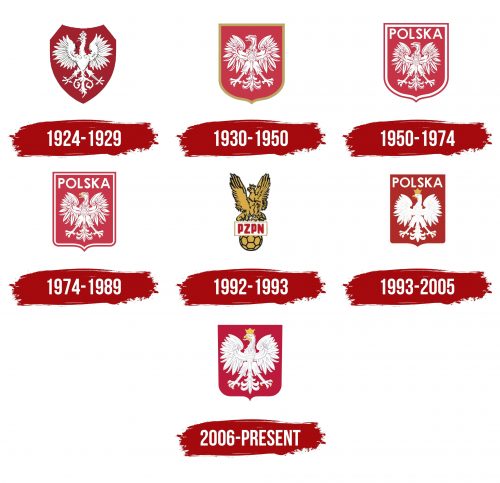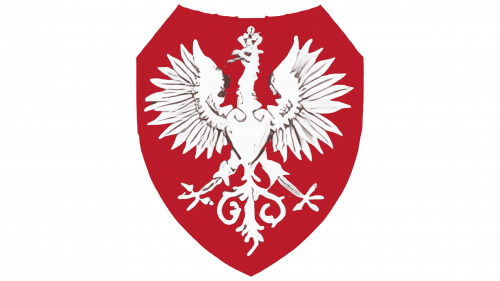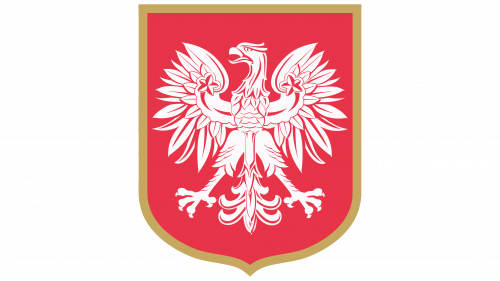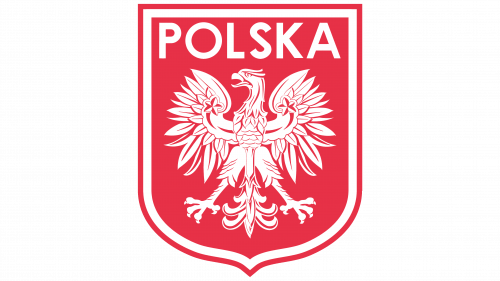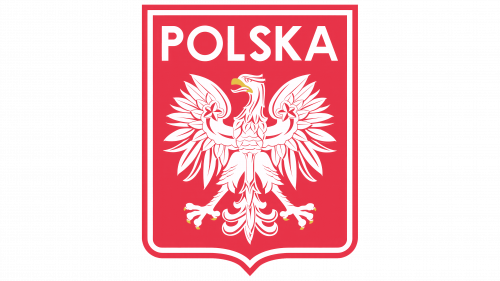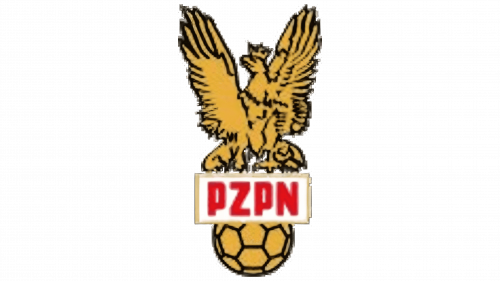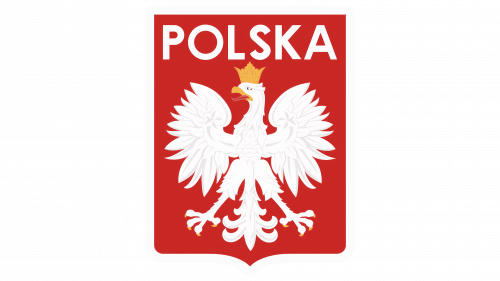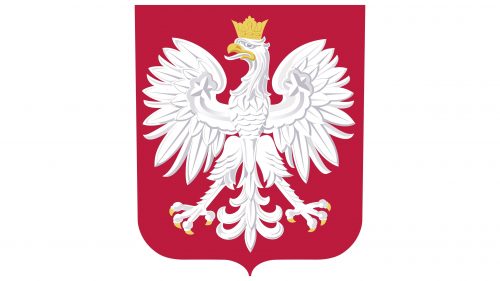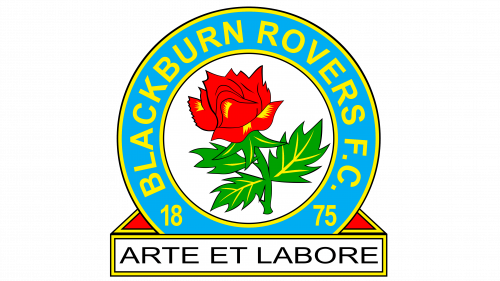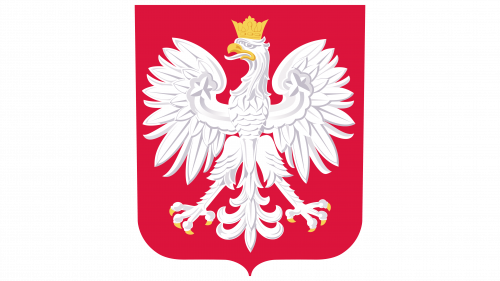 Poland National Football Team Logo PNG
Poland National Football Team Logo PNG
The Poland national football team logo emphasizes the athletes’ national identity and patriotic feelings. The emblem reflects the unity of the team and the fans, united by a shared passion for football. The logo embodies pride in the team’s winning international matches and confidence in a bright future.
Poland National Football Team: Brand overview
With a storied history dating back to the 1920s, the Polish national football team began its journey in 1921 with a narrow 1-0 defeat against Hungary. Throughout the 1930s, Poland earned a reputation as a formidable European side. A notable moment came in 1936 at the Berlin Olympics, where Poland finished fourth after a close 3-2 loss to Norway in the bronze medal match. Their World Cup debut 1938 featured a thrilling 6-5 elimination match against Brazil.
After World War II, Poland quickly returned to the international stage, competing in the 1952 and 1960 Olympics without securing medals. The 1974 World Cup marked a turning point, with Poland finishing third, led by stars like Kazimierz Deyna, Włodzimierz Lubański, and Grzegorz Lato. The 1970s became a golden era, highlighted by a 1972 Olympic football tournament gold medal. In the 1982 World Cup, Poland secured another third-place finish, defeating France 3-2 in the third-place play-off, with Zbigniew Boniek emerging as a key player.
Following the 1970s and 1980s successes, the Polish national team experienced a period of decline, missing several major tournaments and struggling in those they did attend. The early 2000s brought particular challenges, with the team failing to progress past the group stages in the 2002 World Cup and Euro 2008 and missing out on the 2006 and 2010 World Cups.
The 2010s signaled a resurgence. Under coach Adam Nawałka, Poland qualified for Euro 2012 and Euro 2016, reaching the quarter-finals in the latter after a penalty shootout loss to Portugal. The 2018 World Cup saw a group stage exit, and Euro 2020, delayed to 2021 due to the pandemic, ended similarly. Poland reached the play-offs for the 2022 World Cup but fell short against Sweden.
Robert Lewandowski, the long-time captain and one of the best strikers of his generation, has been a pivotal figure for Poland, becoming the national team’s all-time top scorer. Other notable players include goalkeeper Wojciech Szczęsny and midfielder Piotr Zieliński. Polish football is renowned for its quick, skillful play that creates dangerous opportunities in front of the goal. Legends such as Zbigniew Boniek, Kazimierz Deyna, and Włodzimierz Lubański have left a lasting legacy.
As of August 2023, Poland is ranked 21st in the FIFA rankings. Despite recent challenges, the team has the potential to compete successfully in major tournaments, though injuries and a lack of cohesion at critical moments have sometimes hindered their progress.
Meaning and History
What is the Poland National Football Team?
The Poland National Football Team represents Poland in international football competitions. Managed by the Polish Football Association (PZPN), the team has a proud history and has significantly contributed to the sport. Known for their hardworking and resilient style of play, Poland has produced several renowned players who have excelled both domestically and internationally. The team has participated in numerous major tournaments, earning respect and admiration from football fans worldwide. The Polish national team continues to strive for excellence, drawing on its rich footballing heritage and passionate support from fans.
1924 – 1929
The first emblem of the Polish national team is heart-shaped. The red color emphasizes love for the homeland and protecting its interests. The white eagle is part of the country’s coat of arms. The history of the bird dates back to the founder of Poland, who saw an eagle rising from its nest in the sun’s rays and was struck by its beauty. Thus, the bird was placed on the national coat of arms. With outstretched wings, the crowned eagle blesses those who gaze upon it as if a ruler is blessing the athletes for their game. The intricately detailed feathers resemble swords, highlighting Poland’s leaders’ courage and readiness to defend the country’s sovereignty.
1930 – 1950
The white eagle appears on the emblem in a new style, with elegant feathers, and without a crown. This lighter image better suits the direction of the sport, reflecting the team’s dynamism, speed, and quick reactions. The red and white colors match the national shades of the country’s flag. The golden border of the shield hints at the athletes’ achievements and Poland’s prominent presence on the global football stage.
1950 – 1974
After World War II, the shield’s design was changed while maintaining the bird’s general appearance. The wide white border emphasized peace and the pursuit of cooperation. The large inscription “Polska” highlighted the team’s identity. The white and red color scheme matched the country’s national colors, chosen from the coats of arms of Poland and Lithuania in the Polish-Lithuanian Commonwealth.
1974 – 1989
The change in the crest’s shape made the emblem sharper and more robust. This choice emphasized the increased prominence of the team in global football. The golden beak and claws of the eagle enhanced the powerful impression. The emblem depicted a successful era for the national team, highlighting their third-place finish at the 1974 World Cup. This design celebrated their achievements and reflected the team’s significant presence and competitive strength internationally.
1992 – 1993
The 1992 logo introduced a new interpretation of the Polish football team’s identity. The statue of an eagle majestically sitting with outstretched wings on a pedestal with the abbreviation PZPN impresses with pride and confidence. The statue balances on a soccer ball at the base of the emblem.
The emblem highlights football as the main focus of the Polski Związek Piłki Nożnej. The national team represents Poland in global tournaments. The eagle in the emblem embodies Polish identity. The identity conveys dynamism, the bright power of ancestral protection, and a blessing for the athletes for successful matches.
1993 – 2005
In 1993, the country returned to the idea of a red shield logo. The emblem features brighter colors and no borders. It focuses on the beautiful white eagle with a golden beak and crown, symbolizing Poland’s monarchy. The logo marks a new phase in Polish football while the national team remains connected to its historical roots and draws inspiration from its national identity.
2006 – today
The modern emblem of the national team is characterized by minimalism. The absence of any inscriptions simplifies the perception of the symbol. The symbols of Poland and the football team are recognizable without a caption, highlighting the team’s long-standing successful performances in international matches. The white eagle is depicted in a dynamic pose, symbolizing the team’s drive for victory, power, and determination on the football field. The logo embodies the team’s development and continuous progress.
